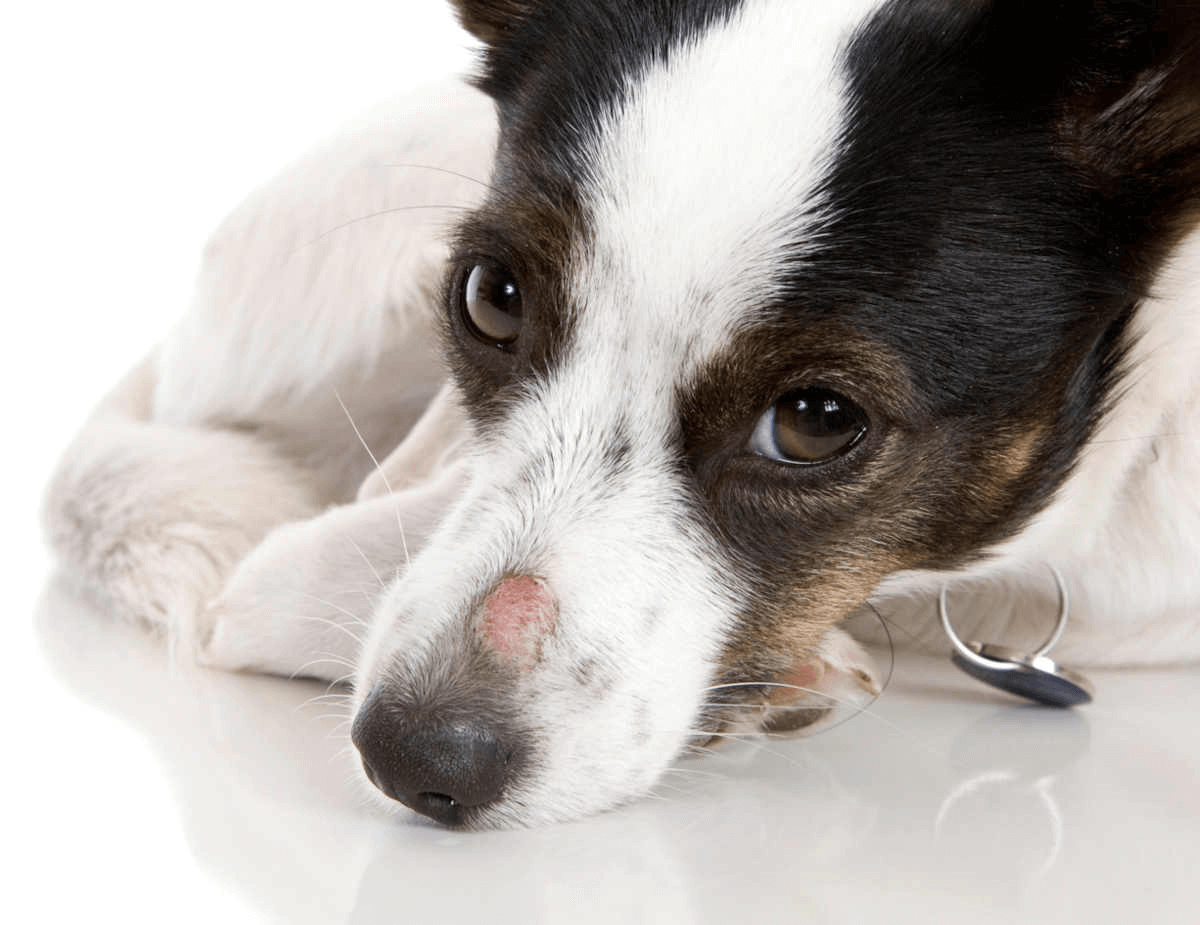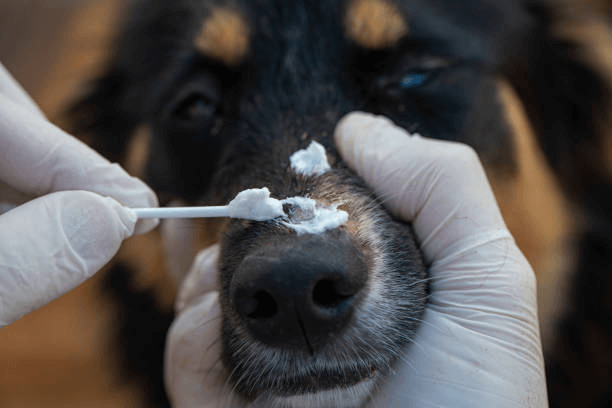Ringworm in dogs is hard to remove. Although ringworm in your dog may not appear to be an emergency, it may grow into further serious issues if not treated promptly.
Ringworm occurs in a circular or ring-shaped pattern on the skin, usually causing redness, loss of hair, and swelling.
Our post will show in dept the symptoms and quick treatment for dogs with ringworm.
What Is Ringworm?
Ringworm in dogs is a fungal infection causing raised, red, and swollen skin rashes. These rashes have a ring-like or worm-like shape.
Ringworm fungus consumes keratin, a protein that serves as the foundation for a dog’s hair and nails. The fungus proliferates and generates spores while they continue to digest keratin. It then causes circular or semi-circular hairless areas and skin rashes.
Ringworm is not fatal, but it can affect your pet’s appearance and cause discomfort.
What Does Ringworm Look Like On A Dog?

Ringworm occurs in a circular or ring-shaped pattern on the skin, usually causing redness, loss of hair, and swelling. Patches can look grey, scaly, or scarlet.
A younger or older dog as well as those with lengthy hair are more susceptible.
Ringworm in dogs can present in 10 common symptoms as list below:
- The ring-shaped pattern on the skin
- Itchy skin
- Inflammation and red skin
- Darkened skin (hyperpigmentation)
- Rashes
- Scabs
- Scales that look like dandruff
- Dry, brittle hair
- Circular or patchy areas of hair loss
- Inflamed folds of the skin around the claws or nails
For example, in addition to itchy or swollen skin, some dogs may experience gray, scaly areas of hair loss.
You can notice ringworm symptoms anywhere on your dog’s body. But the most typical ringworm spots in dogs are the face, ears, feet, and tail.
What Causes Ringworm In Dogs?
There are 3 different fungi that may trigger ringworm, including Microsporum canis, Microsporum gypseum, and Trichophyton mentagrophytes.
The fungus Microsporum canis is the main culprit of ringworm infections in dogs.
Dogs frequently catch ringworm when playing outside since some types of fungus may flourish uncontrolled in the soil.
Moreover, your pet may also get ringworm directly from an infected animal or from contaminated household items such as food/water bowls, especially in the fibers of towels, carpets, sofas, linens, etc.
The ringworm spores can last for months. Therefore, ringworm will spread through your dog’s previously lost fur.
Read more: My Dog Sounds Like He Has A Hairball
How To Treat Dogs With Ringworms?

If the fungus is treated promptly, the treatment process is quite simple. There are a variety of good treatments available.
The following are the most typical ringworm treatments:
- Topical medication.
- Anti-fungal oral medication.
- Environmental decontamination to get rid of any contaminated elements and prevent the infection from spreading.
- Shave the dog’s fur around areas that are more infected if needed.
- Clean your dog’s skin regularly
More important, contact with veterinarian will often eliminate any further potential causes of patchy hair, flaking skin, itching, and inflammation. They will also carefully review your pet’s medical history to determine whether your dog is allergic to anything or suffers from any other skin issues.
In Summary
Got to know what does ringworm look like on a dog and the causes that lead to ringworm produced in your dogs’ skin.
Be at ease! Ringworm poses no threat to the life of your beloved dog. All you need to do is treat and isolate your dog for a few weeks.
Moreover, contact with the veterinarian and let them choose the best treatment based on its severity.
Please also regularly clean the dogs to avoid ringworm appearance!
